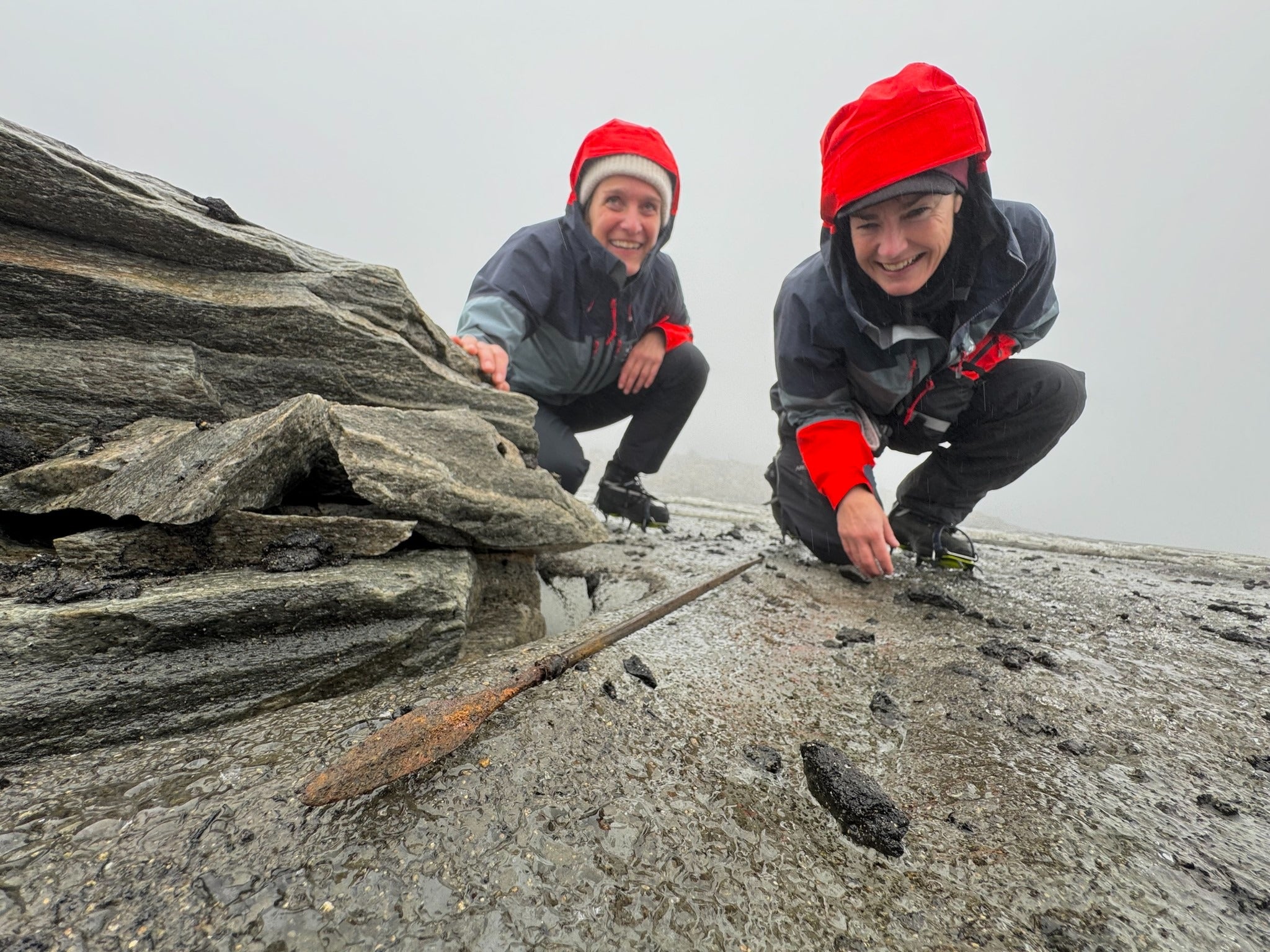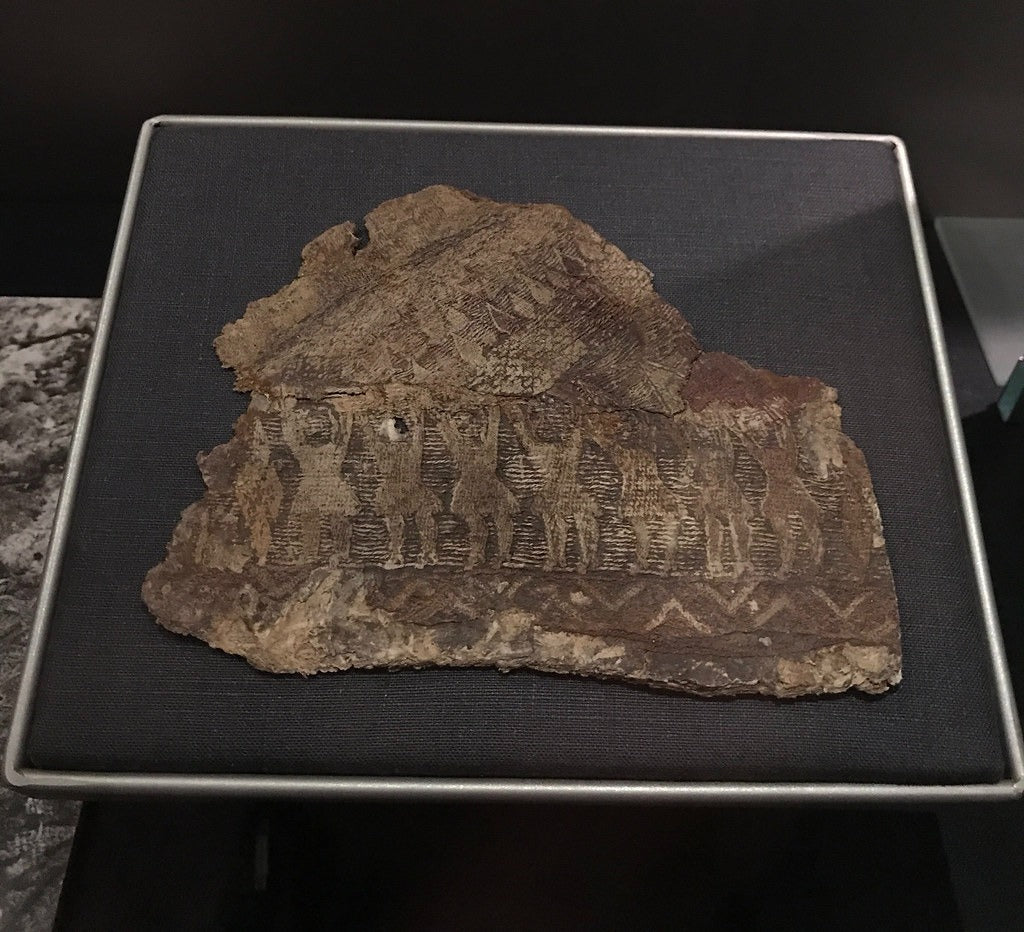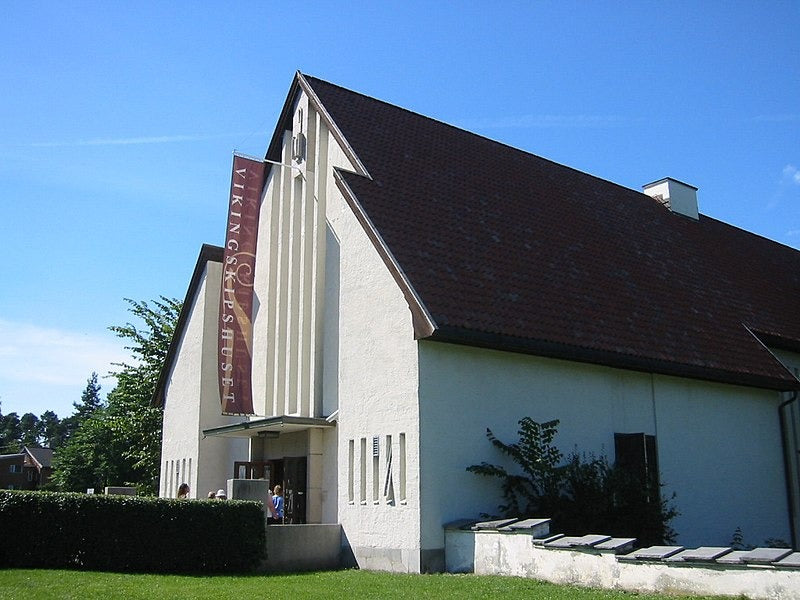
Viking Age Artifacts Emerge from Melting Norwegian Glaciers
In the rugged mountains of Norway, a race against time is unfolding. As climate change causes glaciers to retreat at an unprecedented rate, archaeologists within the Secrets of the Ice program are uncovering a treasure trove of artifacts that have been preserved in ice for over a millennium. These discoveries are not only providing invaluable insights into life during the Viking Age and earlier periods but also serving as stark reminders of our changing climate.
The Lendbreen Ice Patch: A Frozen Time Capsule
One of the most significant sites for these discoveries is the Lendbreen ice patch in Jotunheimen, Norway. This area, once a bustling mountain pass during the Viking Age and Middle Ages, has been yielding extraordinary finds as the ice melts away. The Secrets of the Ice preservation project, led by experienced glacial archaeologist Espen Finstad, has been at the forefront of these excavations.
"There are some incredible finds on the ice and land, in areas we've never been able to explore before because they were covered in ice," Finstad explains. This statement underscores the unprecedented nature of their work - they are quite literally uncovering history that has been inaccessible for centuries.
Recent Discoveries: A Glimpse into Ancient Life

An ancient, yet well-preserved arrow unveiled from the melted ice (Photo: Espen Finstad / secretsoftheice.com
The 1,300-Year-Old Arrow
One of the most remarkable recent finds is a 1,300-year-old arrow, discovered in near-perfect condition. The arrow's preservation is nothing short of miraculous, with its iron arrowhead, sinew at the joint, and wooden shaft all intact. Only the fletching is missing, though a faint imprint remains visible.
The exceptional state of preservation is due to the unique conditions within the glacier. As Finstad and his team note, "When finds melt out on the ice surface, this normally signifies that they have not been out of the ice since they were lost so long ago. The objects are frozen in time."
The Rare Three-Bladed Arrowhead
Even more intriguing is the discovery of a rare three-bladed arrowhead. This is only the second such arrowhead found by the team, with the first dating back to the Viking Age. However, this latest find is even older, potentially dating back to the early Iron Age (around AD 300-600).

Photo by Espen Finstad / secretsoftheice.com
"It's a type of arrow that is very, very rare," Finstad emphasizes. The uniqueness of this find cannot be overstated - it provides a rare glimpse into ancient archery techniques and weapon craftsmanship.
Textile Fragments and Horse Remains
The team's discoveries extend beyond weapons. They have uncovered numerous textile fragments, including a well-preserved piece found on the first day of their latest expedition. While such textile finds are not uncommon at Lendbreen - the site has previously yielded hundreds of fragments, including a Viking-era mitten and a tunic - each new discovery adds to our understanding of ancient clothing and textile production.

A well preserved piece of textile (Photo: Secretsoftheice.com)
The archaeologists have also found evidence of the animals that once traversed this mountain pass. A large horse canine tooth was uncovered, likely belonging to one of the many pack horses used during the Iron Age and Medieval period. Alongside this, copious amounts of horse dung were discovered, offering potential insights into the diet and health of these ancient equines.
The Dark Side of Glacial Archaeology
While these discoveries are undoubtedly exciting, they come with a sobering realization. The very reason these artifacts are being uncovered is the rapid melting of glaciers due to climate change. As Finstad and his team poignantly note, "This is the dark side of glacial archaeology."
Comparison photos of the Lendbreen ice patch from 2006, 2018, and recent expeditions show a stark reduction in ice coverage. This visual evidence serves as a powerful reminder of the ongoing climate crisis and its tangible impacts on our natural and cultural heritage.
The Race Against Time

Large hose tooth found in Lendbreen (Photo: secretsoftheice.com)
The melting ice presents both an opportunity and a challenge for archaeologists. On one hand, it's revealing artifacts and information that have been locked away for centuries. On the other, it's a race against time to recover these items before they are damaged or destroyed by exposure to the elements.
As Finstad puts it, "The ice is melting, and we have to make the best of it." This sentiment encapsulates the bittersweet nature of their work - exciting discoveries tinged with the knowledge of why they're possible.
Implications for Our Understanding of History
The finds at Lendbreen and other glacial archaeological sites are revolutionizing our understanding of life in ancient Norway. They provide tangible links to the past, offering insights into trade routes, hunting practices, clothing, and daily life that we might otherwise never have known.
Moreover, these discoveries are challenging some of our preconceptions about the past. The mountain pass at Lendbreen, for instance, suggests a level of mobility and trade in the Viking Age and earlier periods that we might not have previously imagined.
Conclusion: Preserving the Past, Confronting the Future
The work of Finstad and his team at the Secrets of the Ice project is of immense value, both historically and in the context of our changing climate. As they continue to uncover artifacts from the melting ice, they are not only piecing together our past but also providing stark evidence of our present climate crisis.
These discoveries serve as a powerful reminder of the urgent need for climate action. They demonstrate that the consequences of global warming are not just theoretical future scenarios, but are already impacting our ability to understand and preserve our cultural heritage.
As we marvel at these ancient treasures emerging from the ice, we must also consider what other irreplaceable artifacts and information we might lose if we fail to address climate change. The melting glaciers of Norway are not just revealing our past - they're sending a clear message about our future.
References
Bergstrøm, I. I. (2024, September 11). A 1,300-year-old arrow and horse dung have emerged from a melting Norwegian glacier. Science Norway. https://www.sciencenorway.no/archaeology-climate-glaciers/a-1300-year-old-arrow-and-horse-dung-have-emerged-from-a-melting-norwegian-glacier/2405832
Secrets of the Ice. Facebook Page. https://www.facebook.com/secretsoftheice








